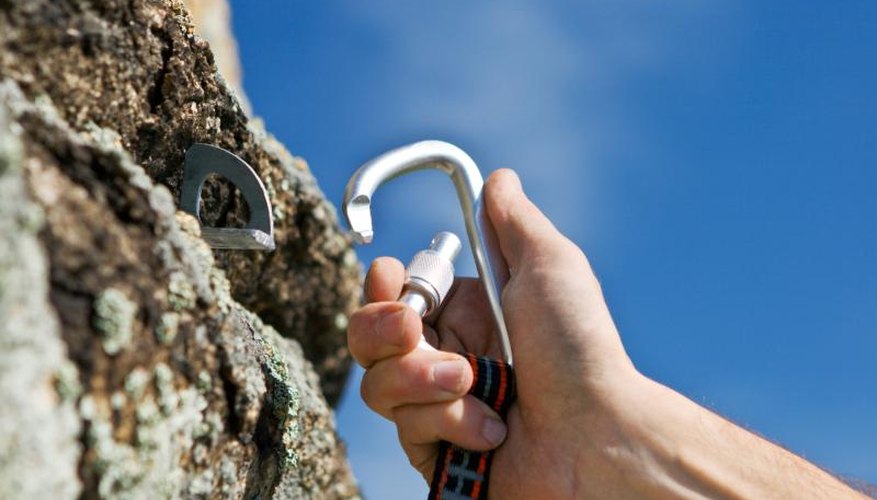
For rock climbers, carabiners are a quintessential piece of equipment. Carabiners can be used to connect parts of an anchor system like your ropes or harness, or to hang bags, shoes or other gear. Aluminum and steel have different properties that are ideal for different carabiner uses. Choose the material that best suits your practices.
Aluminum Carabiners
Aluminum is the most common material for carabiners used in rock climbing. Aluminum is light and stiff, making it ideal for a climber's harness since extra weight can put a serious drag on a climb, especially in remote areas. A high-quality aluminum carabiner usually has a strength rating around 26 kN. Since one kilo-newton is 225 lbs, this gives aluminum carabiners a strength rating of around 5,850 lbs. Many other parts of your suspension system will likely fail before approaching forces this high.
Steel Carabiners
For rescue and helicopter crews, weight isn't really a concern. In these applications, steel is often chosen for its superior strength and fire resistance. Steel carabiners are usually rated around 45 kN or 10,125 lbs, almost double that of aluminum, making them ideal for suspending heavy objects as well as people. Steel is also heat resistant up to 2,000 degrees fahrenheit, compared to aluminum's heat resistance of only 1,000 degrees. Combined with steel cables, they are safe for use in fire rescues.
Strength vs. Weight
When choosing between steel and aluminum, you're essentially making a trade between strength and weight. Since aluminum's strength rating is still very high compared to other climbing equipment like harnesses and rope, you'll be safe using an aluminum carabiner in almost all applications. Rescue crews who deal with more challenging environments switch to steel without worrying about the weight, since the extra strength is of primary importance.
Safety First
Carabiners are safety equipment, which should be treated with care and respect. A drop of greater than five feet can compromise the strength of a steel or aluminum carabiner, limiting its safety. Don't share carabiners with others, since you cannot ensure their carabiners have not been dropped. In addition, check the locks and gates on all of your carabiners before using them as part of a suspension system, and always secure carabiners with the open side of the gate pointing down to discourage the locks from unscrewing during your climb.
References
Writer Bio
Max Roman Dilthey is a science, health and culture writer currently pursuing a master's of sustainability science. Based in Massachusetts, he blogs about cycling at MaxTheCyclist.com.



